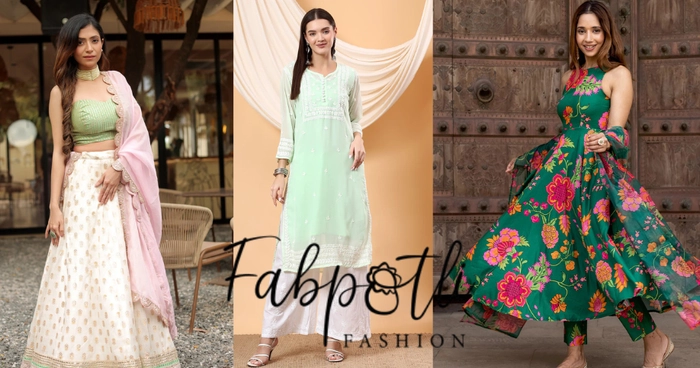Fashion changes at lightning speed, but you can almost count on one thing to stick around: the charm of handcrafted ethnic wear. Those skirts, kurtas, and dupattas whisper history while they smile for the camera. For the woman who likes tradition with a side of now, they slip into a closet like they were born there. Sustainably made and absolutely eye-catching, they feel less like a purchase and more like a small, joyful ceremony.
The Legacy of Craftsmanship
Drifting back in time, you can follow the needle from village to city, each town leaving answers in its stitches. Shell motifs from Orissa, zardozi from Delhi, or the layered lines of Madhubani—however you collect them, they all tell another chapter. What you hold in your hands today is an echo of a lesson handed over from grandmother to daughter to neighbor, all quietly nodding that the craft must breathe.
That very breath is visible in every uneven thread; it says, I was here, I am here, and I won’t be going anywhere soon. When a single person pours skill and afternoon light into a garment, that outfit earns a heartbeat of its own. You button it, zip it, and for a flash it feels like the fabric is looking back, winking, almost saying, I knew you’d pick me. Stories like that never go out of style.
Why Handcrafted Ethnic Wear Works Overtime
Handmade kurtas, lehengas, and kantha jackets are no longer stuck in the back of the closet for festivals only. Slip a lace-trimmed kurta over faded blue jeans and you've got coffee-shop chic. Drape a patterned dupatta across a solid-color dress, and suddenly that outfit is ready for date night.
Modern designers have a way of remixing the past. Bold dyes, easy-care fabrics, and sharp new cuts breathe life into age-old embroidery and weaving methods. The result is clothing that looks fresh yet feels steeped in culture.
Busy lives demand clothes that can switch gears quickly, and this is where ethnic wear shines. A single piece can headline a wedding or go unbothered through a stroll around town. Handcrafted styles keep doing their job season after season, making them a quiet essential in any savvy wardrobe.
Sustainability and Conscious Fashion
Fast fashion may still grab headlines, but its heavy footprint has shoppers and makers asking for something gentler. In the middle of that quiet outcry, handcrafted ethnic wear has stepped forward, promising style with a lighter conscience.
Pieces like these often start with fabric spun from certified organic cotton or silky modal, materials that brag less about their journey but leave a smaller mark on the world. Natural dyes mixed from roots, leaves, or minerals, plus hand embroidery and local weaving, turn each garment into a small, planet-friendly statement.
When you slide one of these creations onto your shoulder, you aren't just covering up; you're casting a vote for the craftspeople behind it. Supporting their work keeps needle-and-thread traditions alive and trades impulse buys for pieces that are built to be loved for years.
Comfort and Quality
Today, women want clothing that looks sharp and feels even better. Handcrafted ethnic outfits tick both boxes by mixing style with serious durability. Designers reach for soft cotton and silky modal blends because those fabrics breathe, bend, and bounce back after every wash. Slip into one of these pieces and the lightweight hugs your skin while still hanging perfectly.
Skilled makers sweat the small stuff. They hand-pick each textile, line up the patterns, and double-check every seam before the last stitch snaps. That level of care turns a dress or kurta into an everyday workhorse instead of a one-night stand. In hectic schedules where errands merge with parties, clothes that move easily become a quiet lifesaver.
The Emotional Connection
Put a handmade outfit on and you don't just cover up; you wrap yourself in memory. The bright borders and loose drapes pictured grandma grinding spices during Diwali or an aunt humming through a wedding kamarbandh. Wearing these pieces whispers, "I belong, and this is who I am." Each curve of fabric waves back a promise to stay original while still nodding at everything that came before.
The Future of Handcrafted Fashion
Bright is the future of handcrafted ethnic wear. More and more women are reaching for clothing that feels personal, that won't cost the earth, and that still turns heads. Designers refuse to sit still. They mix old embroidery, bold colors, and new cuts so outfits naturally fit teens, grandmas, and everyone in between.
One major push comes from online sales. Shops on phones and laptops allow shoppers to explore tiny artisan brands that were hard to find just a few years ago. Fusion fashion and one-off custom orders are on the rise, letting buyers pick a hemline today and a jacket lining next week. The look stays fresh even when tradition stands at its core.
When you slip into a handmade kurta or a stitched wrap from a local maker, you're saying a lot without shouting. The simple choice keeps ancient crafts alive and nudges the industry toward fair wages. It's a style that hugs the planet and still looks luxe. Call it fashion with a conscience.
Conclusion
Handcrafted ethnic wear is not a fad that will fade by summer; it is proof that handwork never goes out of style. For the modern woman, these pieces promise comfort, flair, and a deeper story sewn into every seam. They sit perfectly between a board meeting and a wedding dance floor. At FabPotli we shout that story from the rooftops, giving you a passport to culture while letting your wardrobe breathe innovation. Slip into one of our styles and carry heritage with you wherever you roam.

